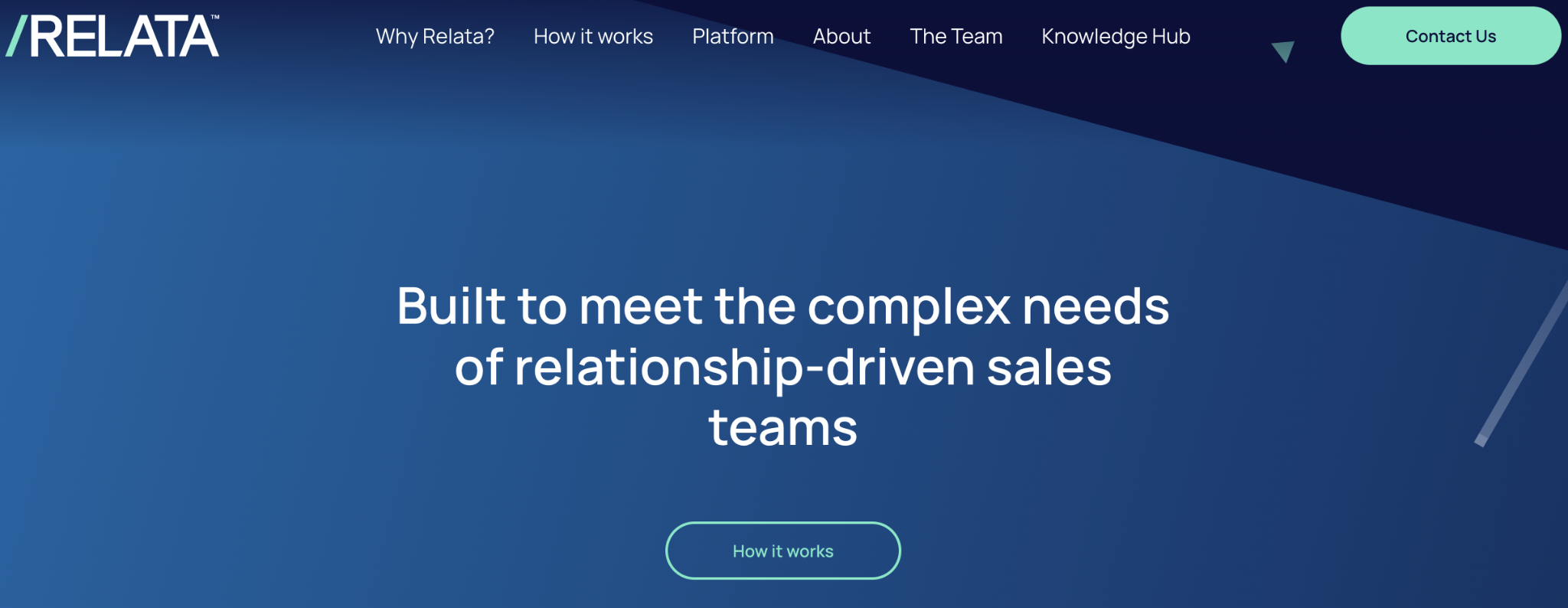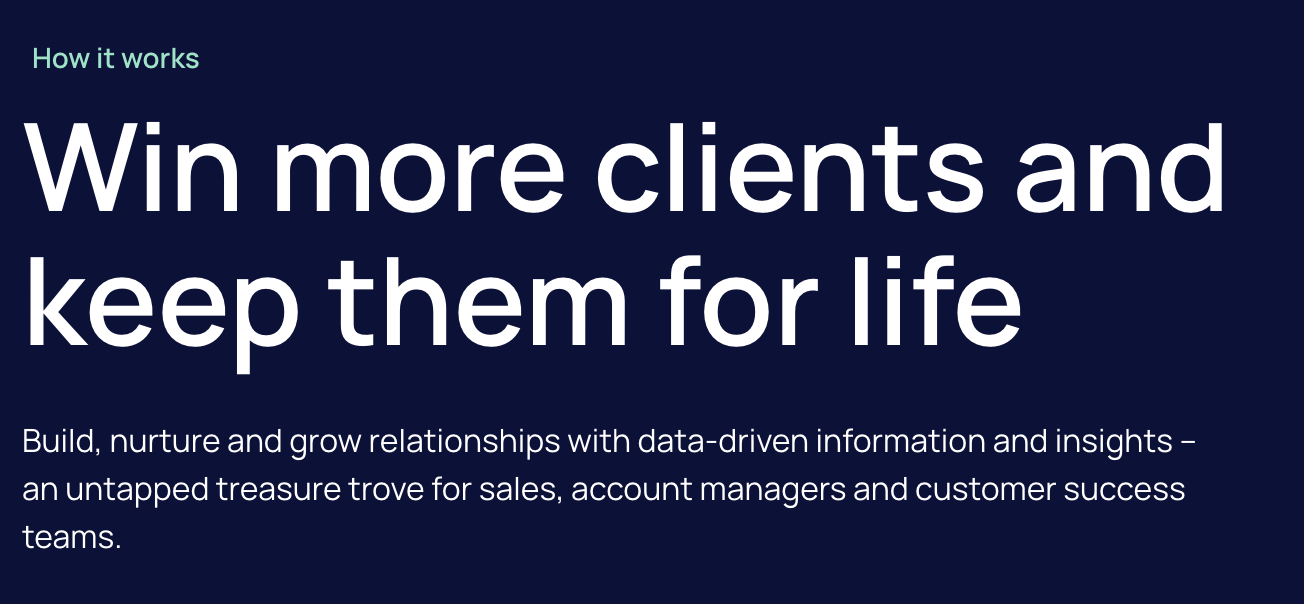How Treecard scaled Apple Search Ads while cutting costs.

-
Relaunch and rebrand to fix a story that didn’t sell
-
Scale sales efforts in a consistent way
-
Resonate with an educated, sophisticated but ‘unaware’ audience
-
Deeply understand the customers who would love Relata’s product
-
Align the offer around the major market shift that makes Relata’s product a must-have
-
Let go of old baggage and craft messaging that puts the customer first
-
A clear, unique brand position based on customers’ needs and competitive points of differentiation
-
Clear messaging, designed to shorten the consideration stage and build product advocacy
-
New website and sales assets that serve as strong business generation tools
Challenges
A hard-to-grasp name and message were putting unnecessary pressure on the sales team.
Relata was established in 2015 out of its founders' frustration with the existing tools that sales teams were using to manage their myriad relationships. At the time, the company was called FeedStock. While their product was extremely valuable and the name made a whole a lot of sense to prospects after the sales team had explained it, the company was struggling to articulate important messages to its audience:
- Why is FeedStock valuable?
- Why should customers be using it?
- Why now?
With no clarity on these issues, FeedStock’s website did not deliver the right message to the right people, and their story did not sell.
Recognising this, FeedStock’s team decided to relaunch with a new name, Relata. This impactful name closely represents the nature of the product, which is all about the data that underpins complex sales relationships.
Now, a name refresh is like a makeover for a company. It can have a deep impact on how customers perceive the business—but it risks being superficial unless you combine it with a new compelling story and messaging that instantly makes sense.
Solutions
Identify the professional drivers that make Relata’s product a must-have for sales teams, and align the narrative around them.
One reason why it’s hard for us to communicate the value of a product is because we don’t know enough about what our audience wants and needs. We don't know what they like, what they fear, what they say, and what keeps them awake at night.
So, our first step was to go back to basics. We held candid interviews with the core target audience of sales people. Those interviews unearthed a lot of useful information, particularly around what sales reps value the most and what they miss in their professional lives.
Equipped with this knowledge, we crafted a narrative that reflected everything the sales people told us about their professional world. Then we layered on a focused messaging framework that served as a foundation for Relata’s new website and sales assets.
Results
A website transformation.
Let’s take a look at Feedstock’s old website versus Relata’s new site. You can instantly see the difference.
FeedStock’s old website
The home page begins with a cryptic statement that doesn’t disclose who the product is for and what it actually is and does. This breaks the #1 rule of landing pages – potential prospects would not be able to recognise themselves in this statement because they are not mentioned by name.
And so, they would click away.

When the product is introduced, it’s all about features. The outcomes for buyers and users of the product are not mentioned.

Here, we finally get some understanding of what FeedStock is. But FeedStock would have lost the attention of most website visitors by now.

More features here, but they do not explain the outcomes for the end user. We don’t know how we’ll benefit from this tool.

And as you can see, the old website used a lot of jargon that’s meaningless to an average buyer, no matter how well-educated they are. It’s pure cognitive load.

Relata’s customer-centric website after the re-launch
From the outset, we can clearly see who the product is for – it is designed for sales teams. And not only that, it’s for sales teams that rely on relationships with their clients.

Instead of hitting hard on features, Relata does a great job describing the outcomes for the end user. We can clearly see where the salesperson can get to by using it.

Relata addresses the ‘Why now?’ question up front, by explaining what is happening in a typical salesperson’s professional environment today:.

Which also means that if they do nothing about their fast-changing status quo, the business may not survive:

This is exactly why they need Relata’s tool. It will help them succeed and win over the competition.

And when Relata talks about their features again, the focus is on the outcome first:

We see why the feature matters:

We see how it helps the user to achieve their goals:

It is too soon in Relata's growth journey to talk about success metrics resulting from this positioning exercise. But all the foundations are there. Relata now has a clear, unique brand position based on its customers’ needs and environment. And it has assets, sales materials and campaigns that reflect this new narrative and serve as strong business generation tools.